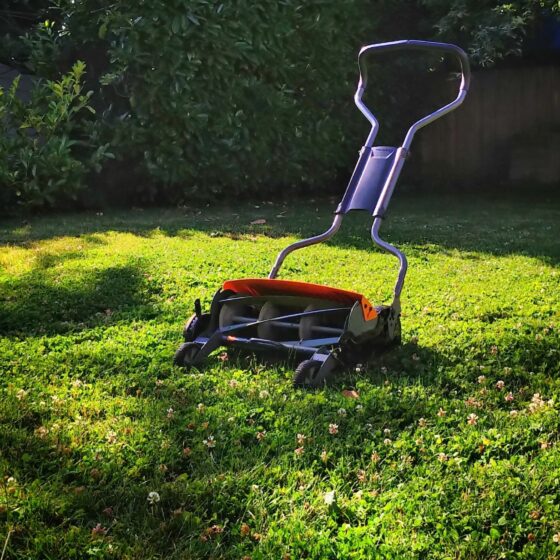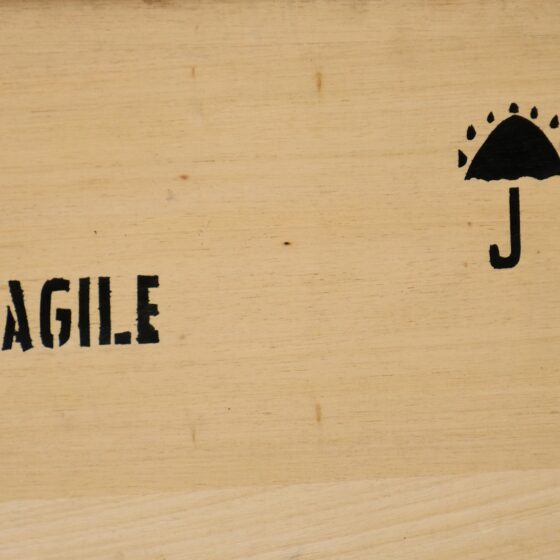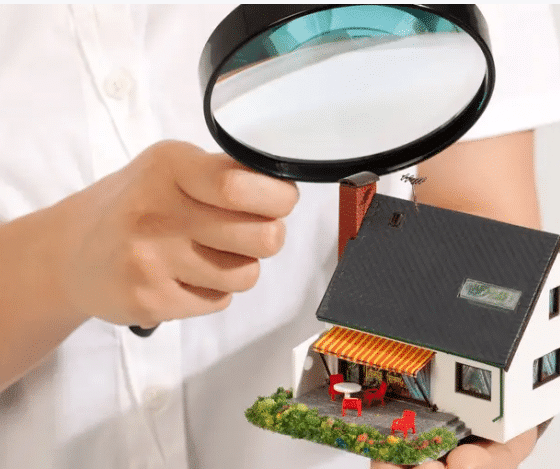Have you been using your electric tea kettle for a while? If so, it’s probably time to get it cleaned. But do you know how to clean an electric kettle quickly and effectively?
If not, you’re at the right place!
Here, we’ll discuss several ways to free your electric kettle from all sorts of build-up and make it shine. Whether your electric pot is made of glass, plastic, or stainless steel, we’ve got you covered.
How Often Should You Wash Your Electric Kettle?
Here are the most important things to consider when creating the cleaning schedule for your kettle:
Frequency of Use
If you find yourself boiling water multiple times a day, you’ll want to clean the interior of your kettle more frequently than someone who uses it only once or twice a week.
Ideally, frequent kettle users should clean their kettles once or twice a month. On the other hand, occasional users should do so once every few months (or when the build-up becomes visible).
Water Hardness
This is a crucial factor for determining how often to clean an electric kettle.
If you use mostly hard water, you should clean your kettle more frequently — at least once a month. If you mainly use soft water, you should clean it at least once every three months.
Hard water leads to the accumulation of calcium and other minerals on the walls of your kettle, which can lead to various malfunctions and eventual breakdown.
So, by regularly cleaning your kettle, you don’t only preserve your health and the delicious taste of your drinks — you also prolong your appliance’s life!
But there’s another serious reason to regularly clean the inside of an electric kettle from mineral residue — if you don’t, it might catch fire!
Kettle Type
Cleaning frequency may also depend on the type of kettle you own. Kettles equipped with water filters (or limescale filters) are less likely to be stained by hard water or covered with limescale and need to be cleaned less frequently.
You should clean these kettles every other month (or according to directions in the manual). You should also regularly replace the filter to keep the kettle spotless.
Keep in mind that even tea kettles of the highest quality can accumulate limescale or other deposits if not cleaned regularly.
Also, don’t forget to wipe the kettle’s exterior every once in a while. If you’re a daily user, do it weekly. Otherwise, you can clean it every month.
What Is the Best Way to Clean an Electric Tea Kettle?
If you’re looking for the most effective natural way to clean your kettle, vinegar is your best bet.
Vinegar is a natural cleaner with disinfectant and descaling properties potent enough to remove any lime or calcium build-up on your kettle’s interior surfaces.
How to Clean an Electric Kettle With Vinegar
You can do this in several easy steps:
- Pour out any remaining water from your kettle and remove the filter.
- Mix equal parts of water and vinegar and fill the kettle halfway. Don’t overfill your kettle because this can damage its heating element.
- Turn on your kettle and bring the mixture to a boil.
- Let the mixture sit for at least 30 minutes or more (depending on how dirty it is). This will give the vinegar time to break down any grime deposits on the interior walls.
- Drain the vinegar solution and brush away any stubborn residue with a bottle brush or an old toothbrush. If you can put your hand in it, use a sponge or cloth to gently rub the inside of the kettle.
- Give your kettle a good rinse (place it under your kitchen sink, and don’t be afraid to generously pour tap water into it and then pour it out). Do this several times.
- Repeat (you may need to repeat the process a few more times to remove all the deposits from your kettle).
- Dry your kettle with a clean cloth or towel.
How to Clean a Stainless Steel Electric Kettle
You should never use harsh chemicals or abrasives to clean your stainless steel kettle.
Using vinegar is one of the most effective ways to clean this type of kettle since this cleaning agent is gentle enough not to damage the finish.
Vinegar
To clean your stainless steel kettle with vinegar, simply fill it up with equal parts of water and vinegar. Bring it to a boil, and let it sit for at least 30 minutes. Then empty it out and rinse it well.
Vinegar and Baking Soda
If your kettle is particularly dirty, you can clean your electric kettle with baking soda too. Just add enough of it to the vinegar solution to create a paste. This will help scrub away any stubborn dirt or grime. Just make sure you rinse the kettle well afterward.
Once you’ve cleaned the kettle, it’s important to dry it thoroughly. Water can cause spots and stains, so make sure to use a soft cloth to dry the inside and outside of the kettle. If there’s a detachable lid, make sure you clean and dry it well too.
How to Clean a Glass Electric Kettle
You can clean your glass kettle the way you would a portable blender or any other smaller household appliance — by using a mixture of vinegar and water. You can also add a little bit of lemon juice to the solution for extra cleaning and descaling power.
To clean the exterior of your electric glass kettle, simply wipe it down with a damp cloth. Just make sure to unplug the kettle first!
How to Clean a Plastic Electric Kettle
The main thing you should bear in mind here is that you should avoid using any abrasive materials. This means no steel wool pads or anything that could potentially scratch the surface of your kettle.
You might also be tempted to give your kettle a good scrub with a brush. But don’t do it!
You should avoid scrubbing altogether, as this too can potentially damage your kettle’s surface. If you absolutely must use a brush, make sure to use a soft one to avoid unwanted scratches.
Overall, it’s best to use only a soft sponge or cloth to wipe the inside and the outside of your appliance.
Five Ways to Descale a Tea Kettle
Regular descaling extends the life of the boiler and reduces the chances of failure and even fire. There are a few ways/cleaning agents you can use to descale your kettle:
1. Vinegar
Expectedly, you can use the most popular cleaning agent for this purpose:
- Fill the kettle halfway with a mixture of equal parts of vinegar and water.
- Bring the solution to a boil and let it sit for an hour.
- Pour out vinegar and water and rinse the kettle with water.
- Brush and repeat until the limescale is gone.
2. Lemon Juice
You can also clean your electric kettle with lemon:
- Use at least two large lemons to make lemon juice (recipes may vary according to the size of your kettle and the severity of the mineral build-up).
- Fill the kettle with a mixture of equal parts of lemon juice and water.
- Boil the kettle.
- Let it sit for at least 30 minutes or until you see limescale dissolving.
- Pour the mixture out and rinse the kettle with clean water.
- Gently brush the interior walls and repeat the whole procedure if needed.
3. Citric Acid Powder
This is another way to clean an electric kettle without vinegar and make it look as good as new:
- Fill the kettle halfway with fresh water, add one tablespoon of citric acid powder, and turn it on.
- After boiling, let the solution sit for an hour.
- Finally, drain the water and scrub any remaining limescale away (it should come off cleanly with little effort).
The citric acid powder is a great natural cleaner because it’s gentle on kettles and doesn’t leave any chemical residue. Plus, it’s widely available in stores and incredibly affordable.
4. Baking Soda
- Fill the kettle up to half with water, and add a teaspoon of baking soda.
- Boil the mixture.
- Let it soak for 20–30 minutes.
- Empty the kettle and rinse thoroughly.
5. Commercial Descaling Solution
Follow the directions provided on the bottle of commercial cleaner aimed at descaling.
But also keep in mind that these products may be harmful to your health and the environment.
How to Clean Mold Out of an Electric Kettle?
If you find mold on your electric kettle, don’t worry! There are a few easy ways to clean it off.
Vinegar and Water
One way is to use these two common cleaning agents:
- Fill the kettle halfway with a mixture of water and vinegar (half vinegar, half water).
- Let it sit for an hour.
- Empty and rinse well.
Diluted Bleach
You can also use a diluted bleach solution to clean the mold off:
- Fill the kettle with a diluted bleach solution (one part of bleach to ten parts of water).
- Let it sit for 15 minutes.
- Empty the kettle and rinse well.
If you encounter stubborn mold, you can use a scrub brush or toothbrush to scrub the affected area lightly. Just make sure to rinse well afterward.
Additionally, you can use this cleaning solution to clean hard water stains from an electric kettle.
Salt and Vinegar Paste
You can also use salt and vinegar paste to get rid of mildew in your kettle:
- Mix 1/2 cup of salt with enough vinegar to make a paste.
- Rub it on the inside walls of your kettle with a cloth. Use a suitable brush (e.g., a bottle brush) if you can’t reach the inside.
- Add fresh water to fill at least one-third of the kettle.
- Bring the mixture to a boil and let it sit for 20 minutes (the paste will break down mildew and make it easily dissolvable in water).
- Finish tea kettle cleaning by rinsing it off multiple times to make sure there isn’t even the tiniest bit of past residue left, so it wouldn’t ruin the taste of your hot drinks.
How to Clean a Tea Kettle’s Exterior
The best way to remove dirt and grime from the exterior of glass, enamel, or stainless steel electric kettle is to make a paste of baking soda and white vinegar:
- Dip a non-abrasive sponge in the mix and wipe the exterior.
- Rinse thoroughly.
- Use a cloth to dry it off.
Another way is to clean your electric kettle with citric acid, that is, lemon juice:
- Rub half a lemon on the exterior of the kettle to remove hard water stains.
- Rinse it with soapy water.
- Rinse it with clear water.
- Make sure your kettle is completely dry before using it again (use a microfiber cloth to help with the process).
You can also treat the exterior of a plastic kettle with warm water and dishwashing soap — use a soft sponge to rub the impurities away gently, and rinse off with fresh water.
Bottom Line
Over time, kettles can start to build up calcium deposits and other impurities that can affect the taste of your drinks. However, if you follow the steps we shared in this blog post, you have nothing to worry about — your kettle will be clean and shiny in no time.
Do you have any additional tips for cleaning electric kettles or other appliances? Let us know in the comments below.
FAQ
What is the best way to clean a kettle?
The best way to clean, descale, and disinfect an electric kettle is to use vinegar, a natural cleaning agent and disinfectant present in virtually any home.
Just mix equal parts of white vinegar and water and fill your kettle halfway. Then you should boil the solution and let it sit for about an hour before pouring it out. Rinse thoroughly with water, and you’re done!
What is the fastest way to descale a kettle?
The fastest way to descale a kettle is to use a commercial descaling solution.
If you don’t have one on hand, vinegar will do the trick. Just follow the steps outlined above, and your kettle will be as good as new in no time.
How do you descale a kettle naturally?
You can use vinegar, lemon juice (citric acid), or baking soda to descale your tea kettle. These are the three most popular natural ways to remove mineral deposits, vinegar being the most effective.
How often should I descale my electric kettle?
Your descaling schedule will mainly depend on the water hardness in your area.
If you’re a regular kettle user (you use your kettle up to five times a day) and use soft water for your kettle, you should descale your kettle once every three months. On the other hand, if you use hard water, you’ll need to descale it once a month.
Occasional users should descale their kettles as soon as they notice any build-up on their kettle walls.
The good news here is that if you already know how to clean your electric kettle and you’re doing it regularly, mineral deposits won’t get the chance to form scales big enough to require descaling.













